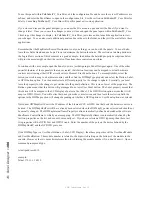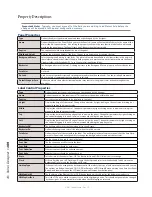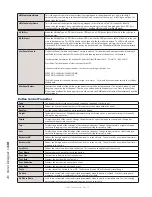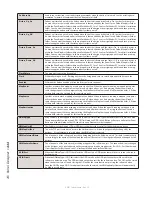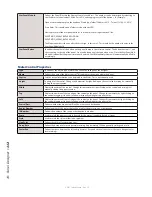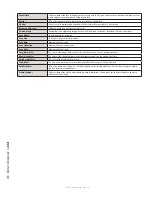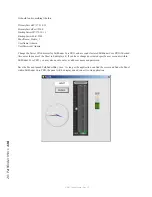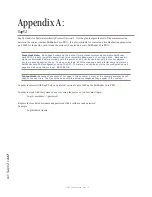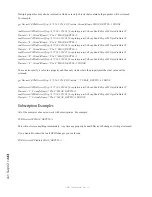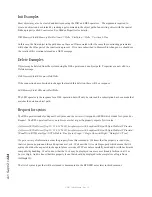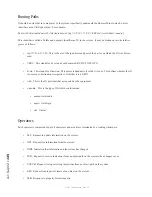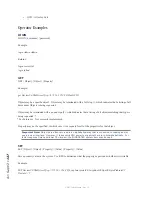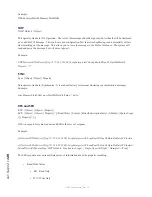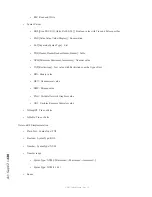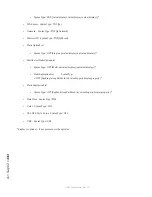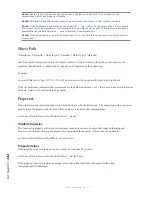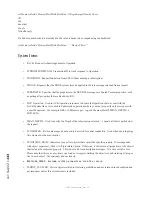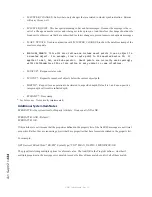
A
1: S
ap
V
2 •
1
2
0
© 2017 Telos Alliance - Rev 1.2
Additionally, if you place the object path separator at the end of the object path (the period), it means you are
requesting the list of sub objects of the requested object.
get Devices#0.Element#[tcp://172.16.1.51:93].
indi Devices#0.Element#[tcp://172.16.1.51:93].LwcpInterpreter#0
indi Devices#0.Element#[tcp://172.16.1.51:93].LwrpInterpreter#0
In this way, it is possible to walk the tree and discover all objects and properties in the system.
If you wish to know when a list has been completely returned, you can add the $DONE system item.
get Devices#0.Element#[tcp://172.16.1.51:93]. $DONE
indi Devices#0.Element#[tcp://172.16.1.51:93].LwcpInterpreter#0
indi Devices#0.Element#[tcp://172.16.1.51:93].LwrpInterpreter#0 $DONE
By using the $DONE system item, the last item in the list carries the $DONE item.
If you only specify the period as the object path then you will get all of the root level objects.
get .
indi LogicFlows#0
indi Users#0
indi Devices#0
indi Routers#0
indi Meters#0
indi TimeEvents#0
indi Requests#0
indi PFCEmulator#0
indi DeviceEmulators#0
indi Logs#0
indi LegacyPanels#0
indi UpdateModerators#0
indi MemorySlots#0
$MAX_DEPTH System item examples
Rather than walking the tree to discover all of the objects, it is also possible to use the $MAX_DEPTH system item
to define multiple layers of returned branches at once.
get Devices#0. $MAX_DEPTH=2
indi Devices#0.EndpointInvestigator#0 $MAX_DEPTH=2
indi Devices#0.EndpointDiscoverers#0 $MAX_DEPTH=2
indi Devices#0.DeviceCreator#0 $MAX_DEPTH=2
indi Devices#0.MicrophoneNode#[tcp://172.16.1.99:93] $MAX_DEPTH=2
indi Devices#0.AnalogNode#[tcp://172.16.1.81:93] $MAX_DEPTH=2
indi Devices#0.AnalogNode#[tcp://172.16.1.97:93].LwrpInterpreter#0 $MAX_DEPTH=2
indi Devices#0.MicrophoneNode#[tcp://172.16.1.99:93].LwrpInterpreter#0 $MAX_DEPTH=2

